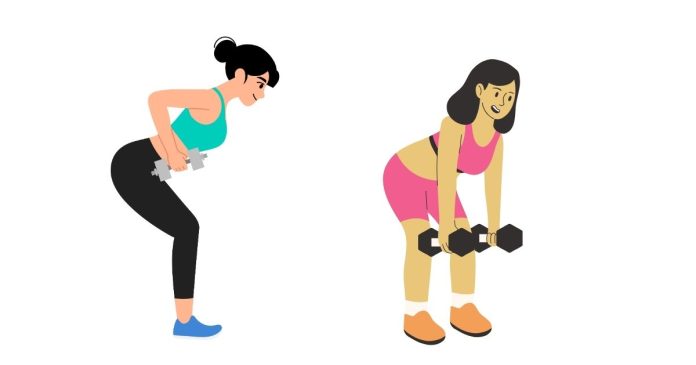Bent-over rows primarily target the upper back muscles, but they engage several areas of the back and surrounding muscle groups. Here’s a breakdown of the muscles worked during bent-over rows:
- Latissimus dorsi (Lats) – These are the large muscles that make up the sides of the back and give the back its V-shape. Bent-over rows work the lats, especially when the arms are pulled towards the body in a rowing motion.
- Rhomboids – Located between the shoulder blades, the rhomboids are heavily engaged during bent-over rows as they help retract the scapula (pull the shoulder blades together).
- Trapezius (Traps) – The traps, especially the middle and lower parts, help stabilize the shoulder blades and assist in the rowing motion.
- Rear deltoids – While primarily a shoulder muscle, the rear delts also contribute during bent-over rows, especially as you pull the weight toward your torso.
- Infraspinatus and teres major – These muscles, part of the rotator cuff group, also play a role in stabilizing and aiding the movement.
- Erector spinae – The muscles along your spine help stabilize your torso while you are bent over during the exercise.
Thus, bent-over rows are a great compound movement for building strength and muscle in the upper and middle back, but they also activate the lower back, shoulders, and arms.



